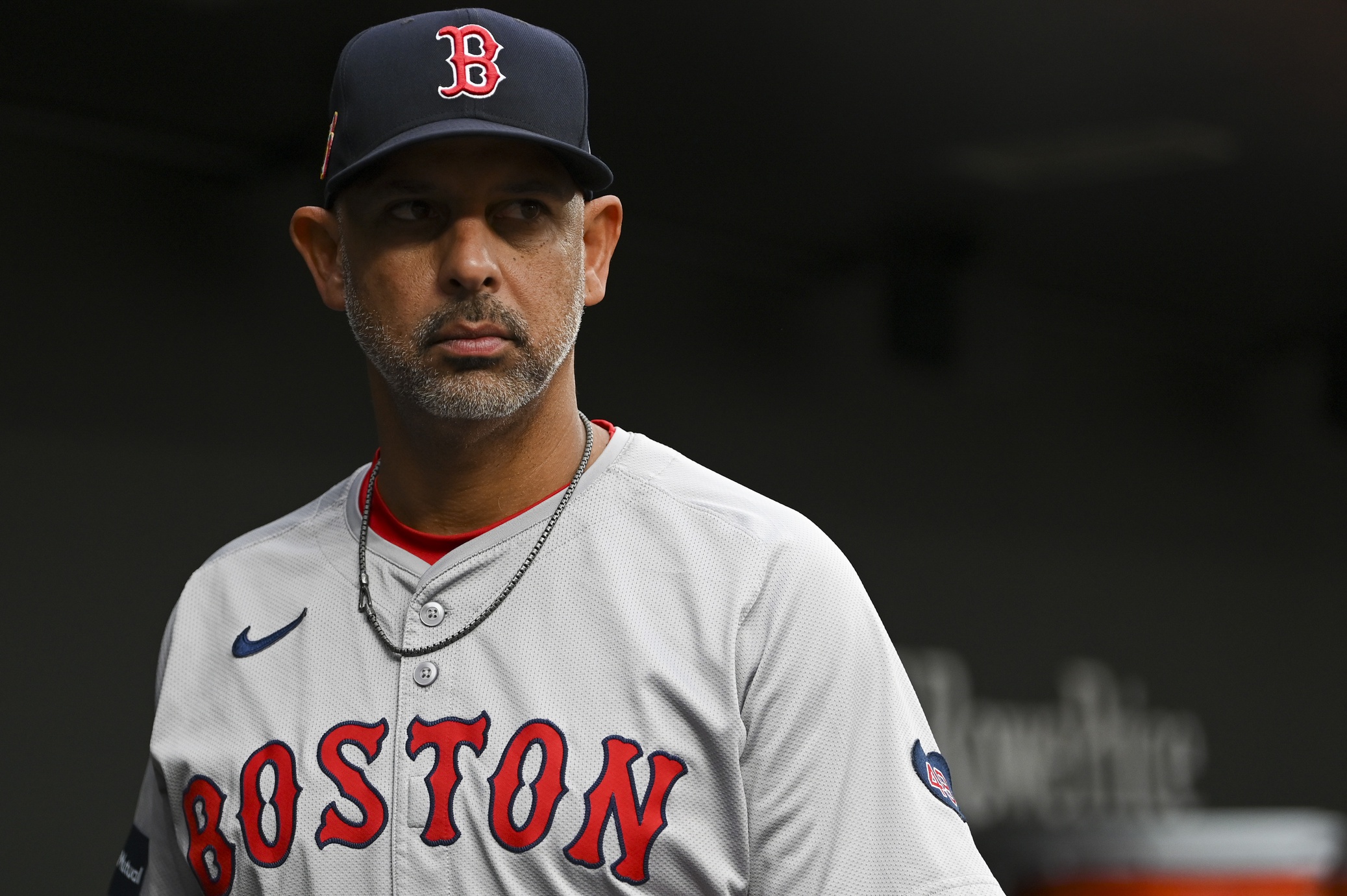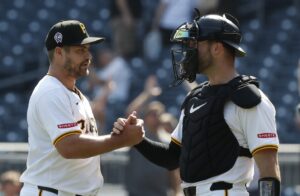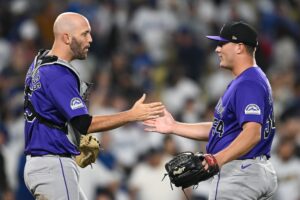Historically, World Series titles have been won at the MLB trade deadline. In 2015, the Kansas City Royals acquired infielder Ben Zobrist, who became a catalyst towards the club’s first championship in 30 years. The Houston Astros brought superstar pitcher Justin Verlander to help head a rotation that won the organization’s first World Series in 2017. The Boston Red Sox made a historic move in 2004, grabbing Orlando Cabrera, Doug Mientkiewicz, and Dave Roberts just before the deadline. That acquisition was massive in Boston’s first championship since 1918.
However, those same Red Sox aren’t approaching the trade deadline the same way 20 years later. In fact, Boston has done the opposite of what that 2004 squad accomplished. The Red Sox have entered MLB trade deadline day in contention for three consecutive seasons. The first two ended in complete disappointment. And if things stay the same, the third year will fit perfectly. Organizational malpractice, coaching, and underperforming have plagued Boston since 2022. Once again, the Red Sox are trade deadline losers.
The Red Sox Fail at the Trade Deadline Once Again
The Previous Failures: 2022
The trend began in 2022 when Boston was one year removed from an American League Championship Series loss to the Houston Astros. The Red Sox were hovering around .500 during trade deadline day on August 2. Boston won that day and improved to 53-52. That put the Red Sox two games back of the third Wild Card spot, which the Tampa Bay Rays held. Their trading approach to that deadline was confusing, though. Instead of moving the needle, Boston made linear transactions that ultimately failed the organization.
The Moves
The Red Sox began the trades by dealing with a long-tenured catcher, Christian Vázquez. The then 31-year-old had been with the club since 2014 and was having a decent season, batting .282 with a .759 OPS and nine home runs. Boston, seemingly signalling a non-buying nature, dealt Puerto Rico native to the Astros for prospects Enmanuel Valdez and Wilyer Abreu. Looking at this from a 2024 perspective, it was a great trade. Abreu has broken out in the majors, and Valdez has proven his worth at times. But, for a team trying to compete in 2022, this pushed the Red Sox further away from contention.
Boston made three other moves by that deadline, including catcher Reese McGuire, who had a strong end to the season. The Red Sox also brought Tommy Pham (rental) from the Cincinnati Reds and Eric Hosmer (salary dump) from the San Diego Padres. Both players struggled to make an impact in Boston and ultimately posted sub-.680 OPS numbers. The Red Sox were downhill from there, quickly falling under .500 and out of playoff contention. They ended the year at 78-84, missed the playoffs by eight games, and declined to add a pitcher despite having a bottom-six team ERA. This was a disaster for a team trying to build off a deep postseason run.
2023 Trade Deadline
Boston’s 2023 trade deadline situation was different from the previous year. This time, once August 1 passed, the club was 57-50. The Red Sox sat 1 1/2 games behind the Toronto Blue Jays for the final Wild Card spot. Boston was fresh off a strong July where it went 15-8 and got itself over the .500 mark. Things seemed to be brewing towards a playoff appearance. All the Red Sox had to do was make the right moves to complement their already capable squad. They did the exact opposite.
The Moves
Boston made five moves to acquire a total of six players at the deadline. Four of the six appeared in the big leagues for the Red Sox that season. Every single one was a disappointment. The biggest deal was the decision to move utilityman Kiké Hernández to the Los Angeles Dodgers in exchange for right-handers Nick Robertson and Justin Hagenman. Hernández had really struggled in 2023 but provided a strong veteran presence in the clubhouse. Following the move, he immediately improved. Robertson pitched just 12 innings for Boston, which were a disaster. He allowed eight earned runs in nine appearances.
The Red Sox failed to move the needle in their other deals. They grabbed infielder Luis Urías from the Milwaukee Brewers, who had just a .535 OPS before the trade. He marginally improved in Boston but never made a big splash. Urías was the only offensive player the Red Sox acquired. They also brought in pitchers Mauricio Llovera and Tayler Scott. Those two combined for a 5.45 ERA. Boston stayed somewhat afloat until early September and then fell off a cliff. The Red Sox failed to make any meaningful moves, which showed in their final record of 78-84.
Two straight years of failures at the trade deadline left the club with the same record.
Barring a miracle, that’ll do it for the 2023 Boston Red Sox. They entered September last year 8 games out of a playoff spot. They will enter September this year in a similar position. Lacking a real rotation was the downfall of this team. Very unsurprising. Big offseason ahead. pic.twitter.com/yTPhs5Kw4h
— Steve Perrault (@Steve_Perrault) August 30, 2023
The Current Failure: 2024
That brings us to 2024, where the Red Sox ended trade deadline day on July 30 with a 56-50 record. They sat two games behind the Kansas City Royals for the third and final AL Wild Card spot. That was all with various injuries, including those to pitchers Lucas Giolito and Garrett Whitlock, taking place. Boston made five noteworthy moves before the clock struck the deadline. But, similar to the previous two campaigns, things just haven’t gone according to plan.
The Red Sox are 11-12 since the deadline. Before Monday’s double-header against Toronto, Boston sits 4.5 games out of a playoff spot. The Red Sox have lost three straight and six of their last 10. And the additions made really haven’t done anything to help. Boston focused on pitching at the deadline, which was the correct choice. The only batter the club brought in was catcher Danny Jansen, who has platooned with Connor Wong behind the plate. Jansen is slashing .231/.33/.385 with the club in 14 contests.
The Moves
The bigger issue is with the pitching additions. The Red Sox had already struggled on the mound, having a rough start after the All-Star break. They made one move for the future, bringing in 23-year-old righty Quinn Priester from the Pittsburgh Pirates. The other three moves Boston made have been a complete disaster. Reliever Lucas Sims, brought in from the Reds, has a 8.10 ERA in 11 appearances. Bullpen peer Luis García has been even worse and, in 10 contests, has a high 10.13 ERA. And starter James Paxton, who spent 2023 with Boston, was brought in from the Dodgers. He threw just 11 innings before getting hurt and was ruled out for the remainder of the season, barring a postseason run. That’s quite the list.
James Paxton’s move to the 60-day IL seemed to indicate he is done for the season. Not necessarily. “ALCS,” Alex Cora said, when asked when Paxton could be ready to pitch again.
— Ian Browne (@IanMBrowne) August 23, 2024
While others went after starters like Jack Flaherty, Yusei Kikuchi, Zach Eflin, and Erick Fedde, the Red Sox went cheap and brought in Paxton, who hadn’t pitched in bulk since 2019. That decision obviously backfired quickly. Boston has allowed the most runs since the break and the second-highest after the trade deadline concluded. The organization sits fifth-worst in team ERA since the deadline, ranking above four teams that are well under .500. Boston once again set itself up for failure with its moves this season. They didn’t need to do anything massive. All that was needed was consistent and mostly reliable pieces. They acquired three major league pitchers, and every single one was a whiff.
August 25th playoff odds the last three years: 2%, 16%, 27% pic.twitter.com/HCzbUW60cY
— Red Sox Stats (@redsoxstats) August 25, 2024
Who Is to Blame?
After the trade deadline from 2022-2024, the Red Sox have a combined 57-78 record. Although the current campaign has not concluded, it’s trending towards a third straight season where Boston has played itself out of postseason contention. The first fingers are pointed at the Red Sox front office, which has failed the roster for three straight years. Multiple players outwardly stated that they wanted strong additions at this year’s deadline. Some of those pieces had watched their club crumble in front of their own eyes in the past. They are currently watching that same trend occur again. It’s not necessarily the lack of moves. It’s the lack of impactful transactions.
The Front Office
With the rumored potential sale of the Red Sox, there is definitely some hope that a new owner could take a more positive approach. A willingness to invest money means higher-quality players will be targeted. That could have led someone like Flaherty or Eflin to end up in Boston instead of Los Angeles and Baltimore. The overall front office is also to blame. Former major leaguer Craig Breslow was hired to make roster decisions for the Red Sox ahead of 2024. He did not impress one bit during his first MLB trade deadline. He shouldn’t be fired, which could be seen as a learning experience. But it’s the only one he gets. Boston fans hope that a potential new face from higher up could start to change something. They will have to wait until a sale, if it even happens, occurs.
The Manager
Then there is manager Alex Cora, who, in his first year, led the Red Sox to a World Series title in 2018. He missed the playoffs the following year, was suspended in 2020, and returned in 2021 to head the ALCS run. But for three straight seasons, Boston has underperformed after the deadline. For at least two of those seasons, the players have seemingly slumped, had negative attitudes, and somewhat given up. That’s on the manager to handle. Yes – it can sometimes be difficult if you can’t bring in high-quality players via trades. Letting a team crumble for, potentially, three straight years is unacceptable. Cora was just handed a contract extension that keeps him tied to the organization through 2027. It shows faith and trust that he will ultimately steer the ship.
However, managing like he has after the break over the last three years is not going to be the best option. Something must change, whether it’s a new tactic or simply a new attitude. That’s ultimately up to Cora to figure out.
Main Photo: © Tommy Gilligan-USA TODAY Sports






